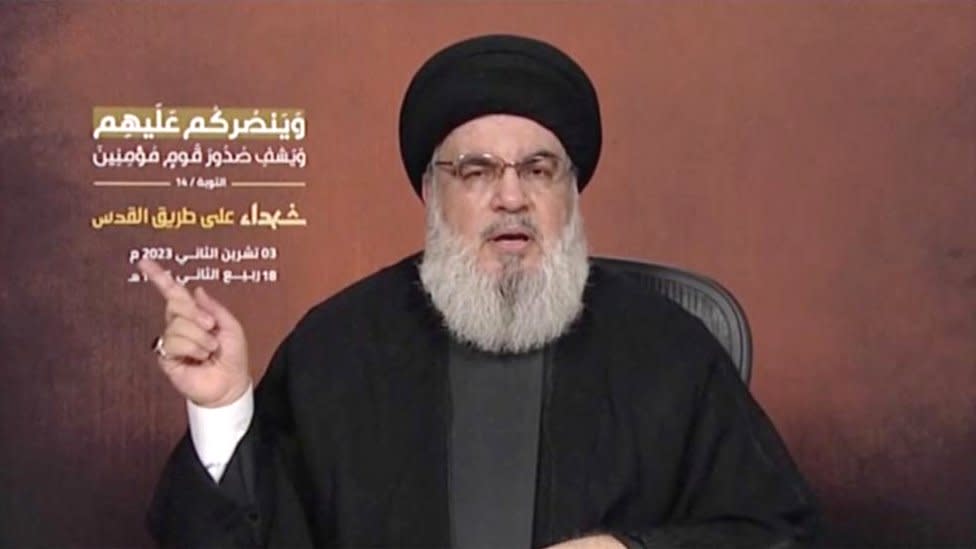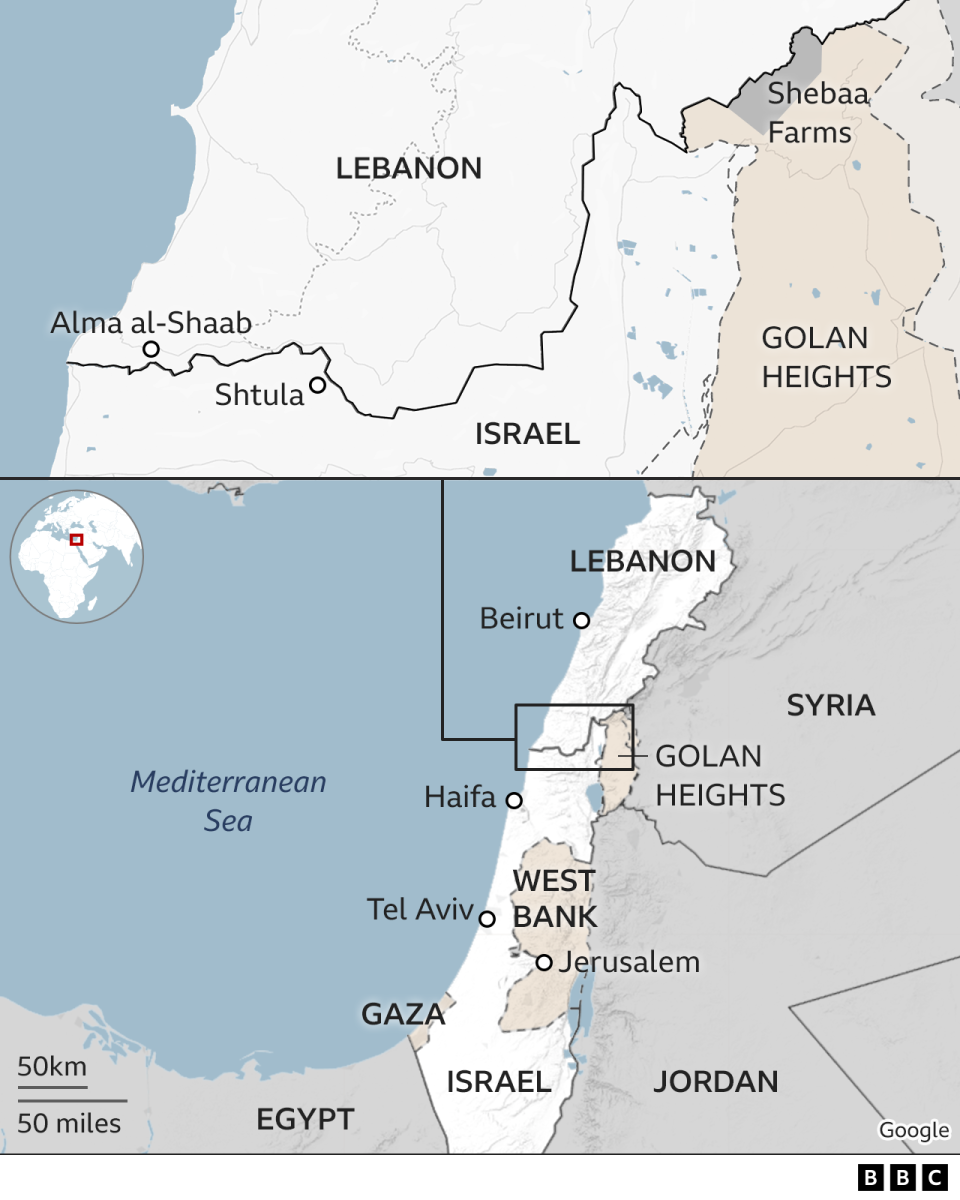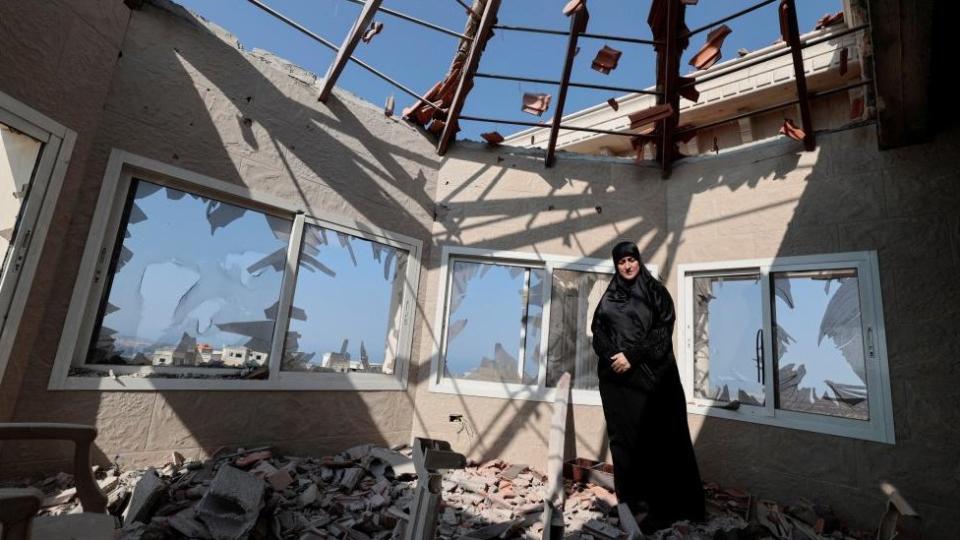What is Hezbollah in Lebanon and will it go to war with Israel?

At least 20 people were killed and more than 450 wounded in Lebanon on Wednesday when walkie-talkies used by members of the armed group Hezbollah exploded, the country's health ministry says.
The blasts followed a series of pager explosions the previous day which killed 12 and injured more than 2,000.
Hezbollah has blamed Israel for the attacks. Cross-border fighting between Israel and Hezbollah has significantly escalated over the past 11 months, sparked by the war in Gaza.
Israel has not responded directly to the explosions, but on Wednesday Israeli Defence Minister Yoav Gallant announced "a new phase in the war".
No electronic equipment considered safe after Lebanon device attacks
Jeremy Bowen: Tactical triumph for Israel, but Hezbollah won't be deterred
What is Hezbollah and where does it operate?
Hezbollah is a politically-influential Shia Muslim organisation which controls the most powerful armed force in Lebanon.
It was established in the early 1980s by the region's most dominant Shia power, Iran, to oppose Israel. At the time, Israel's forces had occupied southern Lebanon during the country's civil war.
Hezbollah has participated in national elections since 1992 and has become a major political presence.
Its armed wing has carried out deadly attacks on Israeli and US forces in Lebanon. When Israeli troops withdrew from Lebanon in 2000, Hezbollah took credit for pushing them out.

Since then, Hezbollah has maintained thousands of fighters and a huge missile arsenal in southern Lebanon. It continues to oppose Israel's presence in disputed border areas.
The group is designated a terrorist organisation by Western states, Israel, Gulf Arab countries and the Arab League.
In 2006, a full-blown war broke out between Hezbollah and Israel, triggered by a deadly cross-border raid by Hezbollah.
Israeli troops invaded southern Lebanon to try to eliminate the threat from Hezbollah. However, it survived and has since increased its number of fighters and obtained new and better weapons.
Who is Hezbollah's leader, Hassan Nasrallah?
Sheikh Hassan Nasrallah is a Shia cleric who has led Hezbollah since 1992.
He played a key role in turning it into a political, as a well as a military, force.
He has close links with Iran and its Supreme Leader, Ayatollah Ali Khamenei.
Nasrallah has not appeared in public for years, reportedly for fear of being assassinated by Israel.
However, he remains revered by Hezbollah, and delivers televised speeches every week.
How powerful are Hezbollah's forces?
Hezbollah is one of the most heavily-armed, non-state military forces in the world. It is funded and equipped by Iran.
Hassan Nasrallah has claimed that the organisation has 100,000 fighters, although independent estimates put the number between 20,000 and 50,000.
Many are well-trained and battle-hardened, and have fought in the Syrian civil war.

Hezbollah has an estimated 120,000-200,000 rockets and missiles, according to the Center for Strategic and International Studies think tank.
Most of its arsenal is made up of small, unguided, surface-to-surface artillery rockets.
But it also thought to have anti-aircraft and anti-ship missiles, as well as guided missiles capable of striking deep inside Israel.
It has much more sophisticated weapons at its disposal than Hamas does in Gaza.
Could Hezbollah go to war with Israel?
The previously sporadic fighting escalated on 8 October 2023 - the day after the unprecedented attack on Israel by Hamas gunmen from Gaza - when Hezbollah fired at Israeli positions, in solidarity with the Palestinians.
Since then, the group has launched more than 8,000 rockets at northern Israel and Israeli positions on the Golan Heights, fired anti-tank missiles at armoured vehicles, and attacked military targets with explosive drones.
The Israel Defense Forces (IDF) have retaliated, using air strikes and tank and artillery fire against Hezbollah positions in Lebanon.
Lebanon's health ministry says at least 589 people have been killed since October 2023. Most of them were Hezbollah fighters, but at least 137 were civilians, according to the ministry.
In Israel, authorities say at least 25 civilians and 21 soldiers have been killed as a direct result of attacks.
Almost 200,000 people have also been displaced on both sides of the border.
Despite the fighting, observers say that up till now both sides have aimed to contain hostilities without crossing the line into full-scale war. But there are fears that the situation could spiral out of control.
Those fears soared after the killing of 12 children in a rocket attack in the Israeli-occupied Golan Heights on 27 July. Israel said Hezbollah carried out the attack, but the group denied involvement.
On 30 July, the IDF announced that it had killed senior Hezbollah military commander Fuad Shukr in an air strike in Beirut's southern suburbs.
The following day, Hamas political leader Ismail Haniyeh was killed in Iran's capital, Tehran. Israel neither confirmed nor denied any involvement.
Ever since, the region has been waiting for a response from Hezbollah and Iran, both of whom vowed to retaliate against Israel.
The US is hoping to de-escalate tensions by brokering a ceasefire and hostage release deal in Gaza, and is putting pressure on Israel and Hamas. Hezbollah has said it will only stop the hostilities once the fighting in Gaza ends.
